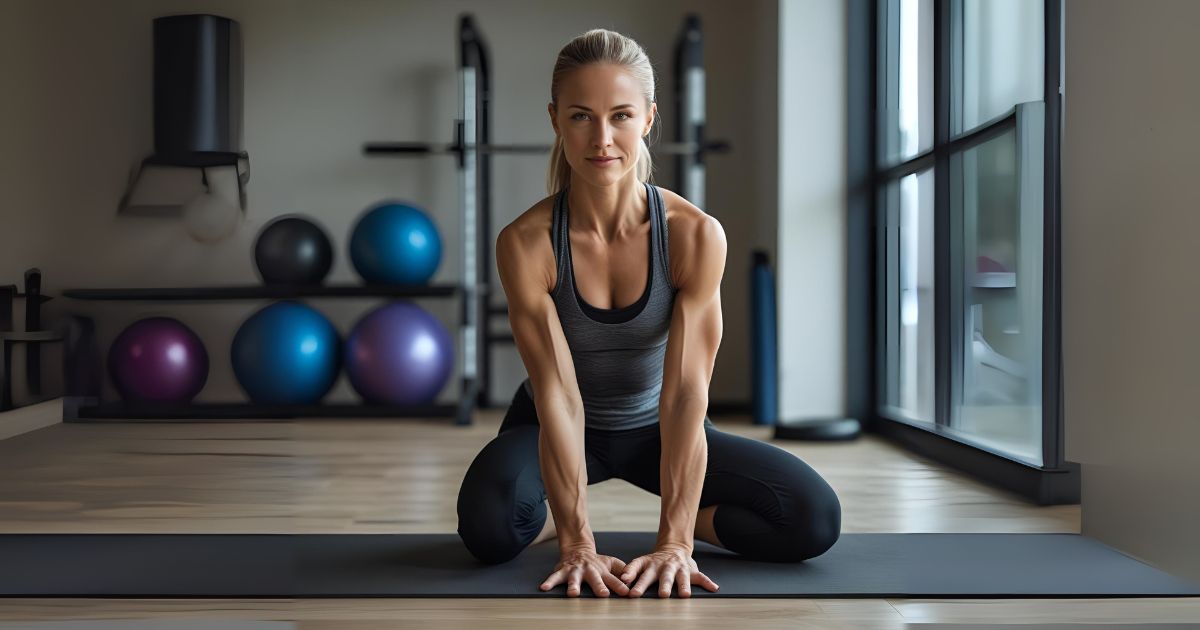In the pursuit of fitness, people often prioritize strength, cardio, and even nutrition—but stretching and mobility? These essentials are often overlooked, misunderstood, or skipped altogether. Yet they’re crucial components of a well-rounded, injury-free fitness routine.
Let’s explore why stretching and mobility matter, how they differ, and how to easily integrate them into your lifestyle.
🧘♀️ What’s the Difference Between Stretching and Mobility?
Though often used interchangeably, stretching and mobility are not the same:
- Stretching refers to lengthening a muscle to improve flexibility.
Example: Holding a hamstring stretch for 30 seconds. - Mobility is the ability of a joint to move freely through its full range of motion.
Example: Performing deep squats or controlled arm circles without restriction.
In short: Flexibility is a component of mobility—but mobility also involves strength, control, and joint health.
🦵 Why They’re Essential to Your Fitness
1. Prevent Injuries
Tight muscles and stiff joints increase the risk of strains, sprains, and overuse injuries. Regular mobility and stretching help keep your body aligned, balanced, and resilient.
Real-world example: Stretching your hip flexors and improving ankle mobility can help prevent knee pain during squats or running.
2. Improve Performance
Mobility allows you to move better and lift more efficiently. It supports better posture, stronger movement patterns, and fuller range of motion.
Better movement = better results.
Whether you’re a lifter, runner, or weekend yogi, increased mobility can lead to:
- Deeper squats
- Stronger deadlifts
- Smoother running form
- Better balance and agility
3. Enhance Recovery
Stretching helps muscles relax post-exercise and can reduce next-day soreness (DOMS). It also promotes circulation, which aids in faster recovery.
Try gentle stretching or foam rolling after workouts to help your body wind down and repair.
4. Boost Everyday Functionality
Improved mobility makes daily tasks—like bending, reaching, or carrying groceries—easier and safer. It’s especially important as you age to maintain independence and prevent falls or chronic pain.
5. Support Mental Wellness
Stretching and mobility work often involve slow, mindful movement and deep breathing. These moments of stillness help reduce stress, increase body awareness, and promote a sense of calm.
🧩 Types of Stretching (and When to Use Them)
🔹 Dynamic Stretching (Before workouts)
- Involves controlled, active movements through a range of motion.
- Great for warming up and preparing your body for exercise.
- Examples: Leg swings, arm circles, walking lunges.
🔹 Static Stretching (After workouts or on rest days)
- Involves holding a stretch for 20–60 seconds to relax and lengthen the muscle.
- Best for cooling down or improving flexibility.
- Examples: Seated hamstring stretch, standing quad stretch.
🔹 PNF Stretching (Advanced)
- Involves contracting and relaxing muscles to increase flexibility.
- Best done with a partner or under guidance.
🧘♂️ How to Incorporate Stretching & Mobility
You don’t need an hour-long yoga session to benefit. Just 10–15 minutes a day can make a big difference.
Daily Mobility Routine:
- Shoulder rolls & arm swings
- Cat-Cow or thoracic rotations
- Hip circles or 90/90 transitions
- Deep bodyweight squats
- Ankle and wrist circles
Weekly Suggestions:
- Pre-workout: 5–10 min of dynamic stretching
- Post-workout: 5–10 min of static stretches
- Off days: Yoga, foam rolling, or mobility drills
✅ Final Thoughts
Stretching and mobility aren’t “extras”—they’re essential for long-term fitness success, injury prevention, and physical freedom. Whether you’re an elite athlete or a desk-bound office worker, your body thrives when it can move well and move often.
Take a few minutes each day to stretch, mobilize, and care for your body. You’ll move better, feel better, and stay active for years to come.

